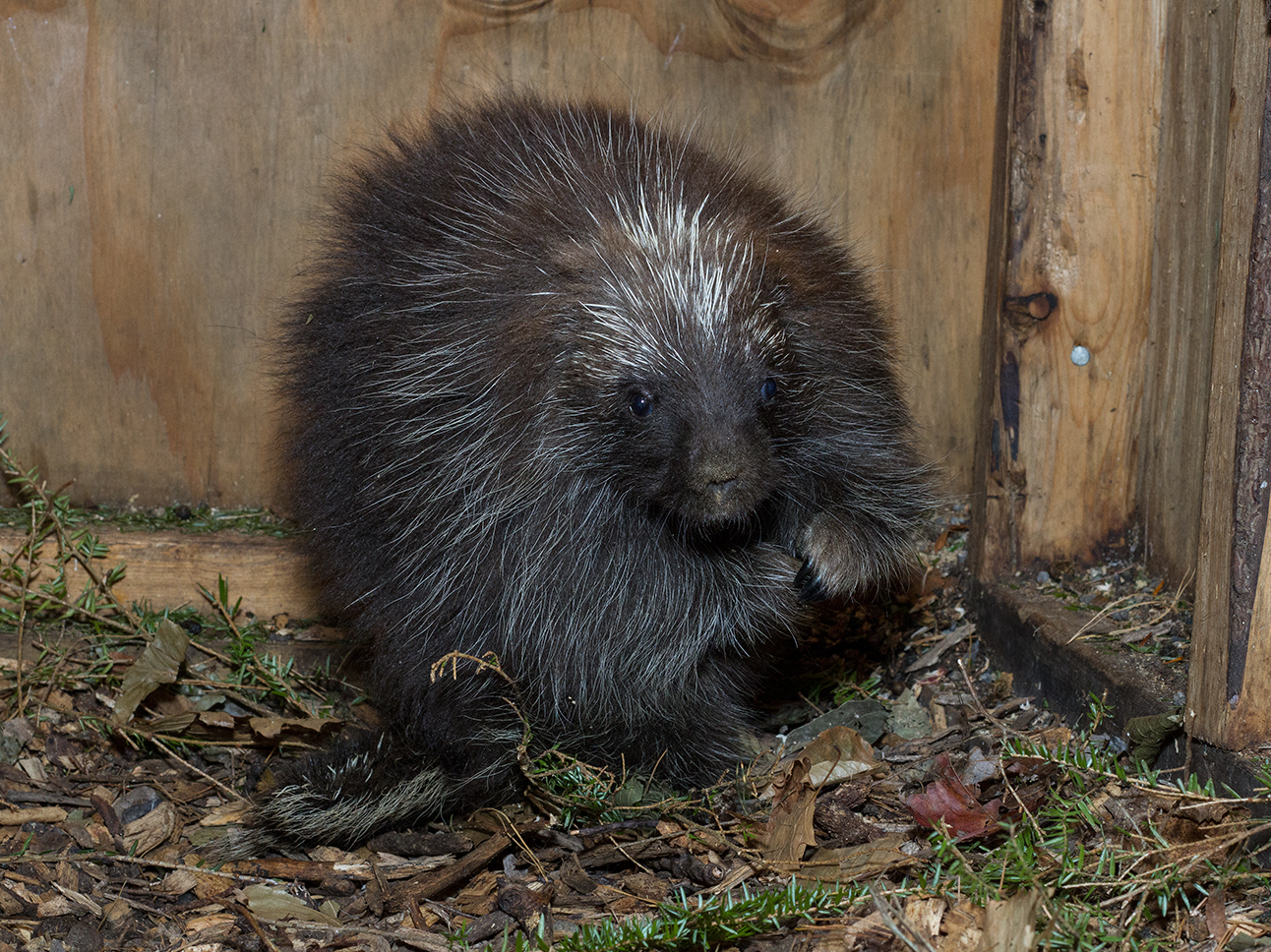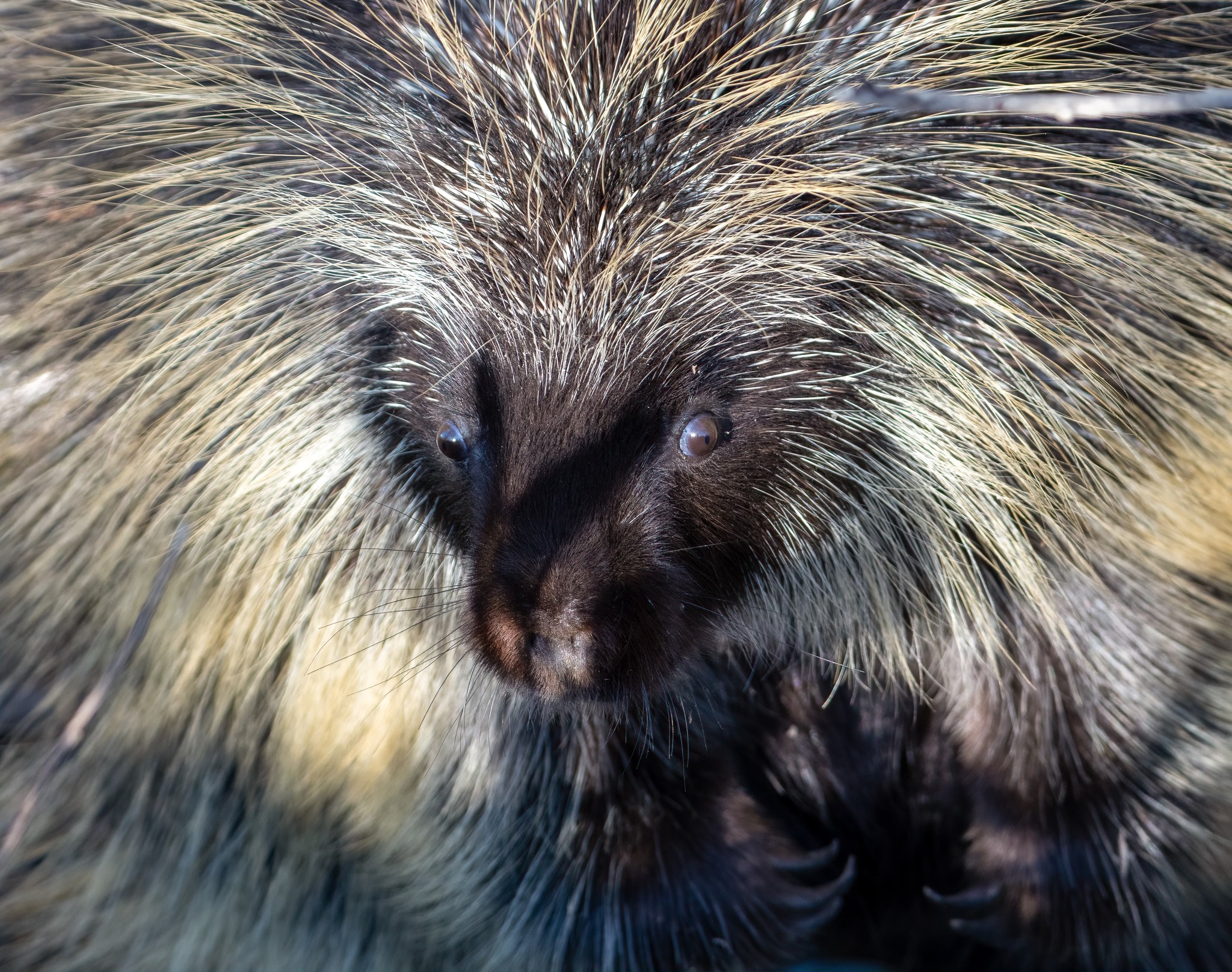|
Erethizon
''Erethizon'' is a genus of New World porcupine and the only one of its family to be found north of southern Mexico. The North American porcupine ''(Erethizon dorsatum)'' is the only extant species, but several extinct relatives are known, the oldest dated to the Late Pliocene. Porcupines entered North America during the Great American Interchange after the Isthmus of Panama The Isthmus of Panama ( es, Istmo de Panamá), also historically known as the Isthmus of Darien (), is the narrow strip of land that lies between the Caribbean Sea and the Pacific Ocean, linking North and South America. It contains the country ... rose 3 million years ago. References {{Taxonbar, from=Q732499 Rodent genera Mammal genera with one living species Taxa named by Frédéric Cuvier Erethizontidae ... [...More Info...] [...Related Items...] OR: [Wikipedia] [Google] [Baidu] |
North American Porcupine
The North American porcupine (''Erethizon dorsatum''), also known as the Canadian porcupine, is a large quill-covered rodent in the New World porcupine family. It is the second largest rodent in North America, after the North American beaver (''Castor canadensis''). The porcupine is a caviomorph rodent whose ancestors crossed the Atlantic from Africa to Brazil 30 million years ago, and then migrated to North America during the Great American Interchange after the Isthmus of Panama rose 3 million years ago. Etymology The word "porcupine" comes from the middle or old French word , which means 'thorn pig'. Its roots derive from the Latin words or pig and meaning thorns. Other colloquial names for the animal include quill pig. It is also referred to as the Canadian porcupine or common porcupine. The porcupine's scientific name, ''Erethizon dorsatum'', can be loosely translated as "the animal with the irritating back". Native American terms for it include the Lakota name meaning ... [...More Info...] [...Related Items...] OR: [Wikipedia] [Google] [Baidu] |
Erethizon Dorsatum
The North American porcupine (''Erethizon dorsatum''), also known as the Canadian porcupine, is a large quill-covered rodent in the New World porcupine family. It is the second largest rodent in North America, after the North American beaver (''Castor canadensis''). The porcupine is a caviomorph rodent whose ancestors crossed the Atlantic from Africa to Brazil 30 million years ago, and then migrated to North America during the Great American Interchange after the Isthmus of Panama rose 3 million years ago. Etymology The word "porcupine" comes from the middle or old French word , which means 'thorn pig'. Its roots derive from the Latin words or pig and meaning thorns. Other colloquial names for the animal include quill pig. It is also referred to as the Canadian porcupine or common porcupine. The porcupine's scientific name, ''Erethizon dorsatum'', can be loosely translated as "the animal with the irritating back". Native American terms for it include the Lakota name meaning qu ... [...More Info...] [...Related Items...] OR: [Wikipedia] [Google] [Baidu] |
New World Porcupine
The New World porcupines, family Erethizontidae, are large arboreal rodents, distinguished by their spiny coverings from which they take their name. They inhabit forests and wooded regions across North America, and into northern South America. Although both the New World and Old World porcupine families belong to the Hystricognathi branch of the vast order Rodentia, they are quite different and are not closely related. Characteristics New World porcupines are stout animals, with blunt, rounded heads, fleshy, mobile snouts, and coats of thick, cylindrical or flattened spines. The "quills" are mixed with long, soft hairs. They vary in size from the relatively small prehensile-tailed porcupines, which are around long, and weigh about , to the much larger North American porcupine, which has a body length of , and weighs up to . They are distinguished from the Old World porcupines in that they have rooted molars, complete collar bones, entire upper lips, tuberculated soles, no ... [...More Info...] [...Related Items...] OR: [Wikipedia] [Google] [Baidu] |
Erethizon Cascoensis
''Erethizon'' is a genus of New World porcupine and the only one of its family to be found north of southern Mexico. The North American porcupine ''(Erethizon dorsatum)'' is the only extant species, but several extinct relatives are known, the oldest dated to the Late Pliocene. Porcupines entered North America during the Great American Interchange after the Isthmus of Panama The Isthmus of Panama ( es, Istmo de Panamá), also historically known as the Isthmus of Darien (), is the narrow strip of land that lies between the Caribbean Sea and the Pacific Ocean, linking North and South America. It contains the country ... rose 3 million years ago. References {{Taxonbar, from=Q732499 Rodent genera Mammal genera with one living species Taxa named by Frédéric Cuvier Erethizontidae ... [...More Info...] [...Related Items...] OR: [Wikipedia] [Google] [Baidu] |
Erethizon Kleini
''Erethizon'' is a genus of New World porcupine and the only one of its family to be found north of southern Mexico. The North American porcupine ''(Erethizon dorsatum)'' is the only extant species, but several extinct relatives are known, the oldest dated to the Late Pliocene. Porcupines entered North America during the Great American Interchange after the Isthmus of Panama The Isthmus of Panama ( es, Istmo de Panamá), also historically known as the Isthmus of Darien (), is the narrow strip of land that lies between the Caribbean Sea and the Pacific Ocean, linking North and South America. It contains the country ... rose 3 million years ago. References {{Taxonbar, from=Q732499 Rodent genera Mammal genera with one living species Taxa named by Frédéric Cuvier Erethizontidae ... [...More Info...] [...Related Items...] OR: [Wikipedia] [Google] [Baidu] |
Erethizon Poyeri
''Erethizon'' is a genus of New World porcupine and the only one of its family to be found north of southern Mexico. The North American porcupine ''(Erethizon dorsatum)'' is the only extant species, but several extinct relatives are known, the oldest dated to the Late Pliocene. Porcupines entered North America during the Great American Interchange after the Isthmus of Panama The Isthmus of Panama ( es, Istmo de Panamá), also historically known as the Isthmus of Darien (), is the narrow strip of land that lies between the Caribbean Sea and the Pacific Ocean, linking North and South America. It contains the country ... rose 3 million years ago. References {{Taxonbar, from=Q732499 Rodent genera Mammal genera with one living species Taxa named by Frédéric Cuvier Erethizontidae ... [...More Info...] [...Related Items...] OR: [Wikipedia] [Google] [Baidu] |
Rodent Genera
Rodents (from Latin , 'to gnaw') are mammals of the order Rodentia (), which are characterized by a single pair of continuously growing incisors in each of the upper and lower jaws. About 40% of all mammal species are rodents. They are native to all major land masses except for New Zealand, Antarctica, and several oceanic islands, though they have subsequently been introduced to most of these land masses by human activity. Rodents are extremely diverse in their ecology and lifestyles and can be found in almost every terrestrial habitat, including human-made environments. Species can be arboreal, fossorial (burrowing), saltatorial/richochetal (leaping on their hind legs), or semiaquatic. However, all rodents share several morphological features, including having only a single upper and lower pair of ever-growing incisors. Well-known rodents include mice, rats, squirrels, prairie dogs, porcupines, beavers, guinea pigs, and hamsters. Rabbits, hares, and pikas, whose ... [...More Info...] [...Related Items...] OR: [Wikipedia] [Google] [Baidu] |
Great American Interchange
The Great American Biotic Interchange (commonly abbreviated as GABI), also known as the Great American Interchange and the Great American Faunal Interchange, was an important late Cenozoic paleozoogeographic biotic interchange event in which land and freshwater fauna migrated from North America via Central America to South America and vice versa, as the volcanic Isthmus of Panama rose up from the sea floor and bridged the formerly separated continents. Although earlier dispersals had occurred, probably over water, the migration accelerated dramatically about 2.7 million years ( Ma) ago during the Piacenzian age. It resulted in the joining of the Neotropic (roughly South American) and Nearctic (roughly North American) biogeographic realms definitively to form the Americas. The interchange is visible from observation of both biostratigraphy and nature ( neontology). Its most dramatic effect is on the zoogeography of mammals, but it also gave an opportunity for reptiles, ... [...More Info...] [...Related Items...] OR: [Wikipedia] [Google] [Baidu] |
Linnaeus
Carl Linnaeus (; 23 May 1707 – 10 January 1778), also known after his ennoblement in 1761 as Carl von Linné Blunt (2004), p. 171. (), was a Swedish botanist, zoologist, taxonomist, and physician who formalised binomial nomenclature, the modern system of naming organisms. He is known as the "father of modern taxonomy". Many of his writings were in Latin; his name is rendered in Latin as and, after his 1761 ennoblement, as . Linnaeus was born in Råshult, the countryside of Småland, in southern Sweden. He received most of his higher education at Uppsala University and began giving lectures in botany there in 1730. He lived abroad between 1735 and 1738, where he studied and also published the first edition of his ' in the Netherlands. He then returned to Sweden where he became professor of medicine and botany at Uppsala. In the 1740s, he was sent on several journeys through Sweden to find and classify plants and animals. In the 1750s and 1760s, he continued to collect ... [...More Info...] [...Related Items...] OR: [Wikipedia] [Google] [Baidu] |
Frédéric Cuvier
Georges-Frédéric Cuvier (28 June 1773 – 24 July 1838) was a French zoologist and paleontologist. He was the younger brother of noted naturalist and zoologist Georges Cuvier. Career Frederic was the head keeper of the menagerie at the Muséum d'Histoire Naturelle in Paris from 1804 to 1838. He named the red panda (''Ailurus fulgens'') in 1825. The chair of comparative physiology was created for him at the Muséum d'Histoire Naturelle in 1837. He was elected as a foreign member of the Royal Society in 1835. He is mentioned in Charles Darwin's ''On the Origin of Species'' (Chapter VII) as having worked on animal behaviour and instinct, especially the distinction between habit and instinct. He is also mentioned in Herman Melville's ''Moby-Dick'' (Chapter 32) as having written on the topic of whales. Evolution Cuvier has been described as the first scientist to use terms ''"héréditaire"'' (hereditary) in 1807 and "heredity” in 1812 in their now biological context. He used b ... [...More Info...] [...Related Items...] OR: [Wikipedia] [Google] [Baidu] |
Pliocene
The Pliocene ( ; also Pleiocene) is the epoch in the geologic time scale that extends from 5.333 million to 2.58See the 2014 version of the ICS geologic time scale million years ago. It is the second and most recent epoch of the Period in the Cenozoic Era. The Pliocene follows the Miocene Epoch and is followed by the Pleistocene Epoch. Prior to the 2009 revision of the geologic time scale, which placed the fou ... [...More Info...] [...Related Items...] OR: [Wikipedia] [Google] [Baidu] |





